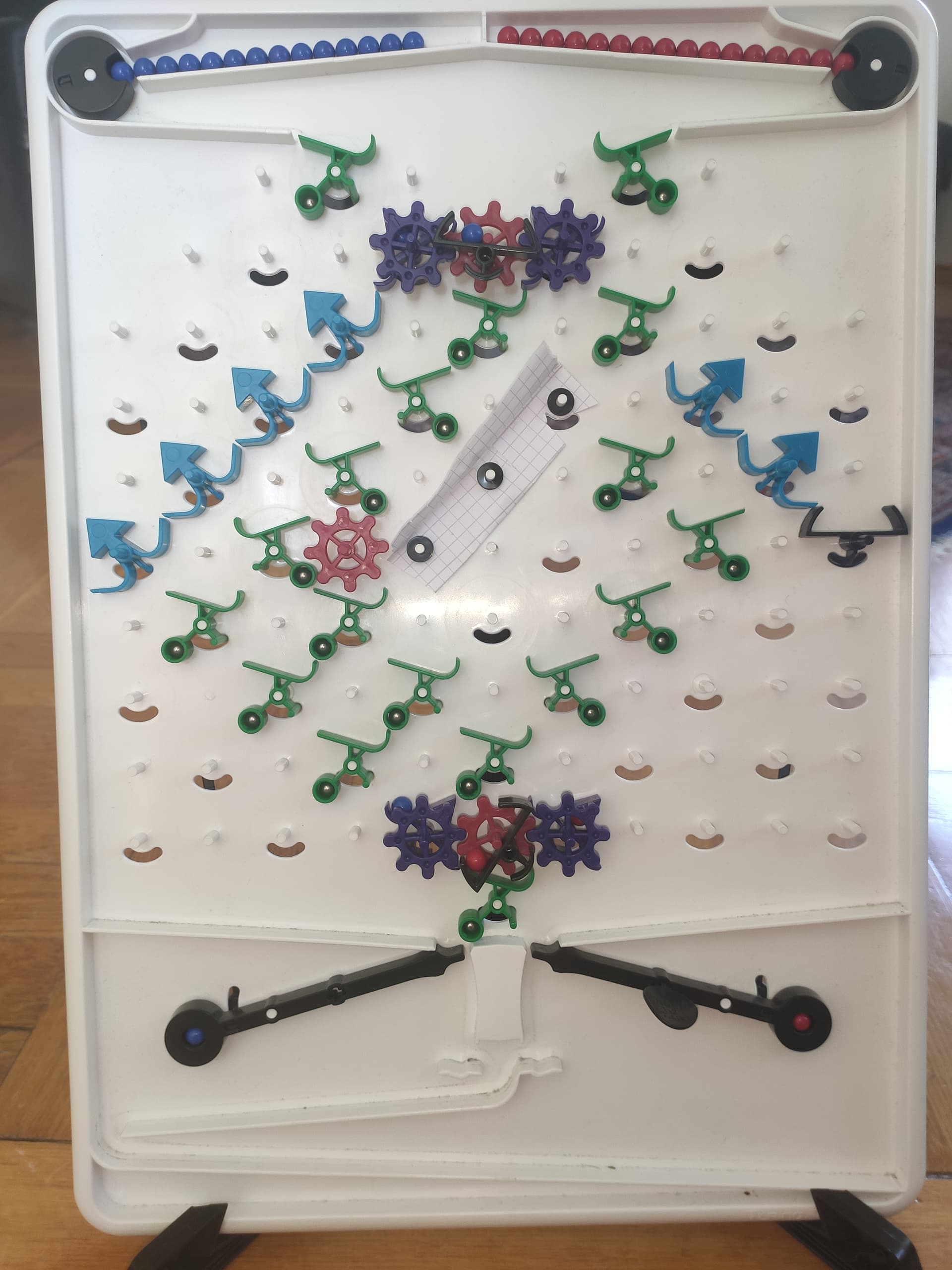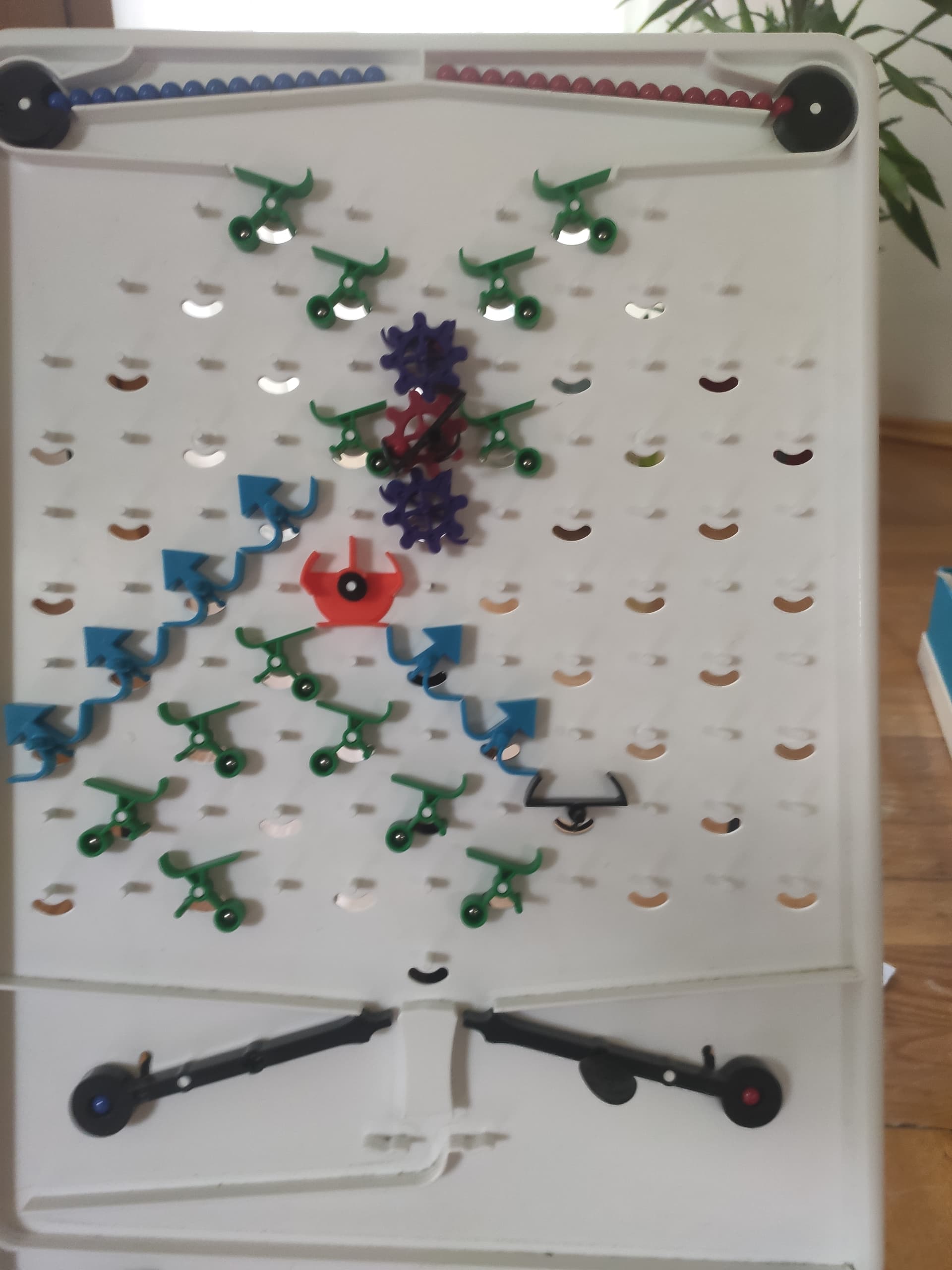Any thoughts on having more than 1 ball at a time running through the circuit? Obviously you cannot have 2 of them hitting certain pieces at the same time (ex. ramp, crossover, etc.) and you also cannot reliably determine exact timing of each one as it moves through the path. These 2 facts are enough to really complicate the idea of multiple balls and make it an extremely limited possibility. However, in some controlled and limited capacity it seems like you could. For example, where the Blue & Red tracks are separate, you could have them being released together. It also seems like it would be safe enough (little-to-no risk of 2 balls reaching the same piece at the same time) if you released the 2nd Blue ball when the first Blue ball was halfway through its circuit.
Anyway, I was thinking about this and how cool it would be to see multiple balls descending the ramps, flipping switches, and turning gears, and also what additional options and puzzles this idea would open up.
 Just saying it probably needs some additional dedicated parts to allow for any meaningful computation.
Just saying it probably needs some additional dedicated parts to allow for any meaningful computation.
